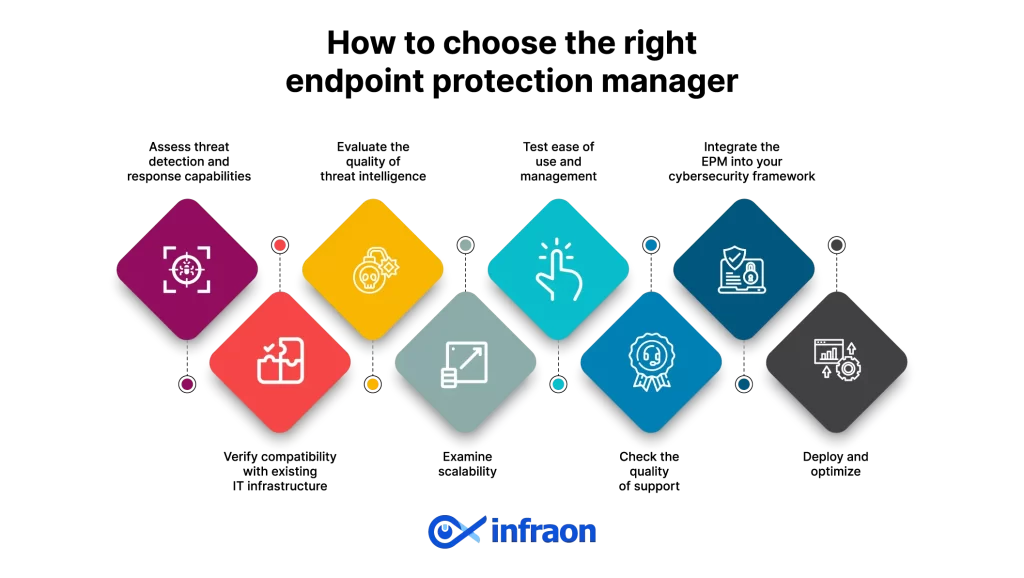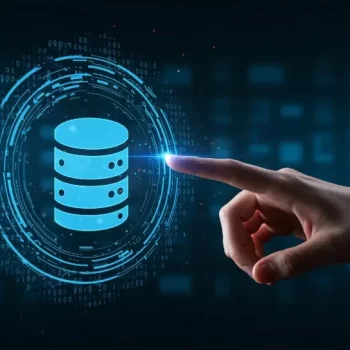As the digital environment evolves, so do the threats that target enterprise endpoints. This reality calls for advanced security measures, with an Endpoint Protection Manager (EPM) at the front and center, helping defend against these advanced threats.
Clearly, cyber threats have advanced, exploiting vulnerabilities across devices, including IoT devices and mobile platforms. The shift towards remote work has further broadened the attack surface. In response, an Endpoint Protection Manager (EPM) has emerged to counteract these threats.
EPM covers a suite of security capabilities focused on the detection, prevention, and response to malware infections and cyber-attack tactics targeting endpoints. Let’s first look at some of its key features.
Related blog: How MSPs Can Help Maximize ROI of Endpoint Management Software
Key features of modern endpoint protection managers
Comprehensive threat protection
EPMs now use artificial intelligence (AI) and machine learning to anticipate and mitigate threats before they impact the network. It identifies unusual behavior and potential vulnerabilities through pattern analysis, enhancing breach prevention accuracy.
Integration capabilities
EPMs are engineered to integrate seamlessly with a variety of security platforms, such as SIEM systems, network security tools, and cloud security services. The capability ensures a unified security posture across the enterprise’s digital infrastructure, enabling a coordinated defense strategy.
Automation and orchestration
EPM solutions alleviate the manual burden on security teams by automating routine tasks and orchestrating complex workflows for incident response. It results in quicker threat mitigation and more efficient security operations management.
Reporting and analytics
With advanced analytics, modern EPM solutions equip security teams with detailed insights into threat patterns and vulnerabilities. Through in-depth reporting and analytics, EPMs provide a detailed view of the security status, supporting informed strategic decisions to bolster security measures.
The importance of endpoint protection manager in 2025
With the cyber threat landscape continually evolving, EPM stands as a vital defense mechanism for enterprises. Amidst growing concerns over data breaches and privacy violations, EPM solutions play a pivotal role in ensuring enterprises meet stringent data protection regulations and standards.
By safeguarding endpoints—often the target of initial breach attempts—EPM systems help maintain the confidentiality, integrity, and availability of sensitive data, thus aiding compliance efforts.
How to choose the right endpoint protection manager

Step 1: Assess threat detection and response capabilities
- Evaluate the EPM’s ability to identify and mitigate a broad spectrum of cyber threats.
- Consider the solution’s mechanisms for detecting advanced threats, including zero-day attacks and sophisticated malware
- Review the response protocols the EPM employs, such as automated threat neutralization and alert systems
Step 2: Verify compatibility with existing IT infrastructure
- Determine how well the EPM integrates with your current IT setup, including compatibility with hardware, operating systems, and other security software
- Assess the EPM’s capacity to function within cloud environments, hybrid setups, or traditional on-premises architectures, matching the enterprise’s operational model
Step 3: Evaluate the quality of threat intelligence
- Investigate the sources of threat intelligence the EPM utilizes, ensuring they are reputable and comprehensive
- Consider the frequency and process of intelligence updates, which are crucial for the EPM to stay protected against emerging threats
Step 4: Examine scalability
- Assess whether the EPM can scale with the enterprise’s growth, accommodating more users, devices, and data without compromising performance
- Look for flexible deployment options that can adapt to changing business needs
Step 5: Test ease of use and management
- Ensure the EPM interface is intuitive for administrators and end-users, enabling superior management and minimal training requirements
- Review the solution’s reporting and analytics features for clarity and usefulness in decision-making
Step 6: Check the quality of support
- Evaluate the support services provided by the EPM vendor, including availability, responsiveness, and expertise
- Consider the availability of resources like documentation, online communities, and training materials
Step 7: Integrate the EPM into your cybersecurity framework
- Conduct a comprehensive risk assessment to understand your enterprise’s specific threat landscape and security requirements
- Customize the EPM settings based on the identified risk profile, ensuring the solution is finely tuned to the enterprise’s operational and security needs
Step 8: Deploy and optimize
- Plan a phased rollout, starting with a pilot group, to monitor the EPM’s performance and gather feedback
- Continuously monitor the EPM’s performance and make adjustments as needed, considering evolving threats and changing enterprise requirements
Related blog: Critical MSP capabilities for ITIM: Handling the complexities of modern IT infrastructure
Future trends in endpoint protection
Advances in artificial intelligence and machine learning are expected to enhance the predictive capabilities of EPM solutions, enabling more proactive identification and neutralization of threats. Furthermore, integration with cloud-based services will likely become more pronounced, offering improved flexibility and scalability.
Also, the advent of quantum computing and the expansion of 5G networks present both challenges and opportunities for endpoint security. Quantum computing, for example, threatens to undermine current encryption standards, necessitating the development of quantum-resistant cryptographic solutions. Conversely, 5G technology, with its potential for increased endpoint connectivity, highlights the need for EPM solutions that can manage higher volumes of data and support a broader array of devices.
As we move through 2025, the importance of Endpoint Protection Manager systems in safeguarding enterprise endpoints against an increasingly hostile cyber threat environment cannot be overstated. Selecting the right EPM solution requires careful evaluation of its features, scalability, and support offerings. Looking forward, enterprises must stay abreast of technological advancements to ensure their EPM strategies remain future-proofed against the next generation of cyber threats.



















